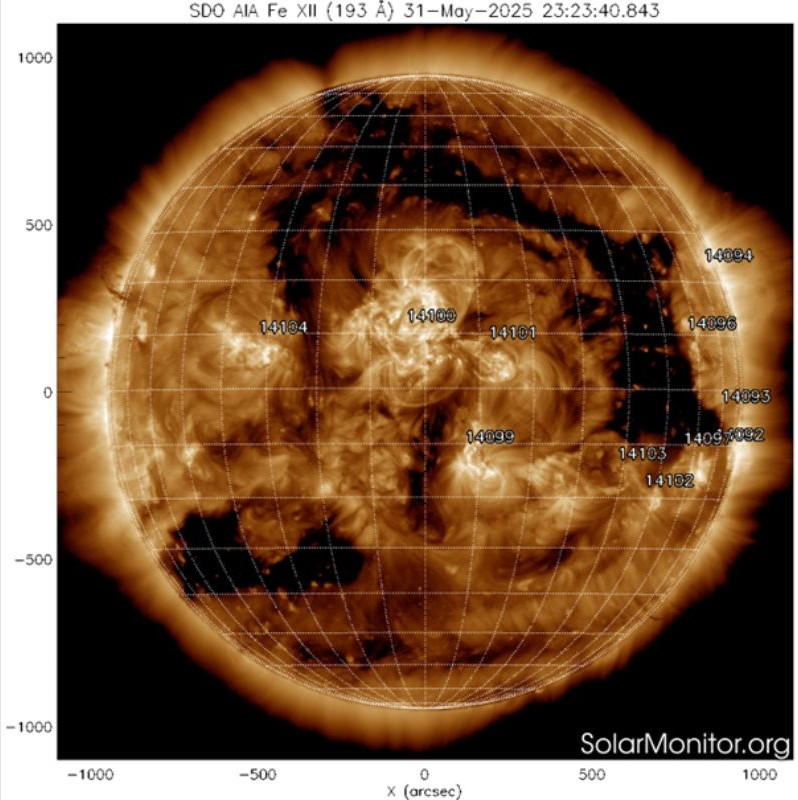Space physicists detected one of the strongest solar storms of the year.

On the first day of June, a strong geomagnetic storm occurred as a result of a solar eruption and subsequent coronal mass ejection directed toward Earth. The aurora borealis was observed in many parts of the world, even in lower latitudes regions. One example is the aurora captured by a webcam in San Diego, California. The event was also detected by experimental physicists from the Department of Space Physics at the Institute of Experimental Physics SAS.
“At the moment of the coronal mass ejection, a new source of magnetic field was created in our solar system. The closer the plasma cloud is to Earth, the stronger the shielding effect of its magnetic field on our planet, and the lower the neutron monitor count rate becomes. The maximum decrease is observed when the plasma cloud passes near Earth and begins to trigger a geomagnetic storm and other space weather effects. As the cloud gradually moves outside from the solar system, the intensity of galactic cosmic radiation starts to increase again,” explains the team from the Department of Space Physics.
Even though the aurora was not observed in our region, physicists are able to uncover interesting physical details related to this event thanks to the SEVAN instruments and the neutron monitor located on Lomnický Štít. These instruments were developed to observe primary and secondary cosmic ionizing radiation fields.
“The plasma cloud travels at a speed of up to 1000 km/s, but the ‘envelope’ of the magnetic field surrounding the plasma travels at the speed of light. Since galactic cosmic radiation consists predominantly of charged particles, this magnetic envelope begins to deflect them out of the solar system well before the plasma cloud reaches Earth. This leads to a decrease in the observed intensity of this radiation on Earth. This phenomenon serves as an early warning of the effects that will occur when the plasma cloud passes near our planet,” explains the team of authors.
The mentioned mechanism could be utilized for early detection of mass ejections from the Sun, as the drop in the galactic component is registered before the plasma reaches Earth. This gives humanity time to prepare for geomagnetic storms, which could otherwise cause serious damage to telecommunications equipment and power grids.
 Contact
Contact Intranet
Intranet SK
SK






